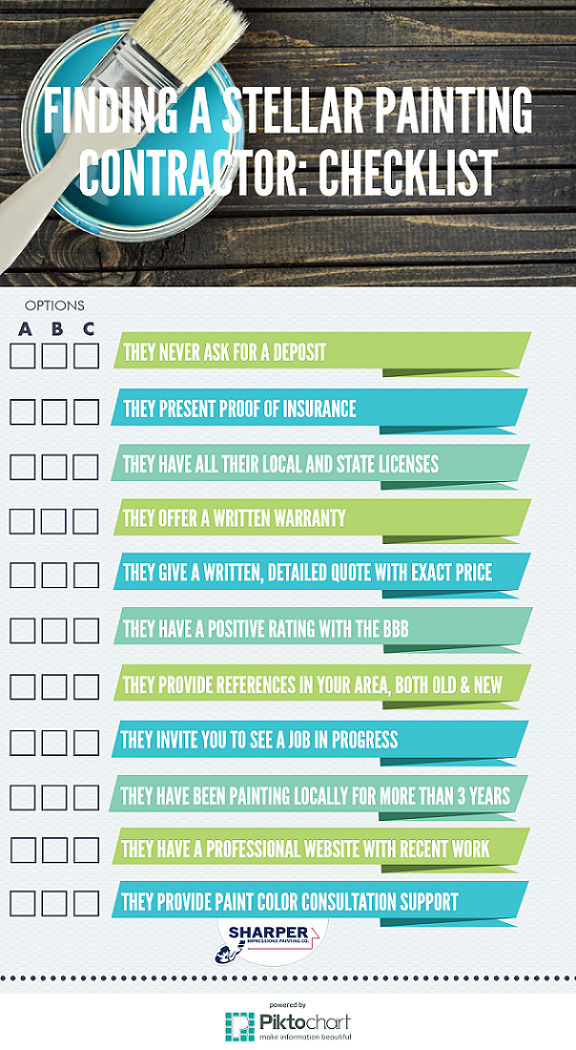Weather'S Result On Commercial Exterior Paint: Essential Understanding For Success
Weather'S Result On Commercial Exterior Paint: Essential Understanding For Success
Blog Article
Web Content Author-Welsh Dohn
When you're preparing a commercial outside paint project, don't undervalue the impact of climate on your results. You need to consider elements like temperature, humidity, and rainfall, as they can make or damage your paint task. For example, did you recognize that excellent problems ask for certain temperature ranges and moisture levels? Stopping working to monitor these elements can result in irregular finishes and even damages to fresh paint. Understanding these components is essential to accomplishing a resilient, professional outcome. So, what specific weather conditions should you watch out for?
Temperature level Considerations
When it pertains to business outside paint, temperature level plays a crucial function in the outcome of your job. If you're painting in extreme heat, the paint can dry out too swiftly, causing issues like poor adhesion and irregular finishes. You want to go for temperature levels between 50 ° F and 85 ° F for the best outcomes. Below 50 ° F, paint may not cure properly, while over 85 ° F, you run the risk of blistering and cracking.
Timing your project with the ideal temperature levels is essential. Beginning your job early in the early morning or later in the mid-day when it's cooler, specifically during warm months.
Also, think about the surface temperature; it can be considerably greater than the air temperature level, specifically on bright days. Utilize a surface thermometer to examine this before you start.
If temperature levels are uncertain, keep an eye on the weather report. Sudden temperature decreases or heat waves can hinder your strategies. You do not want to start repainting just to have the conditions alter mid-project.
Moisture Degrees
Moisture degrees substantially affect the success of your commercial external painting job. When the moisture is expensive, it can hinder paint drying out and treating, resulting in a range of problems like inadequate adhesion and complete high quality.
If you're planning a work throughout moist problems, you might locate that the paint takes longer to completely dry, which can expand your job timeline and rise prices.
On the other hand, reduced moisture can likewise pose difficulties. Paint might dry out also promptly, protecting against correct application and resulting in an uneven finish.
You'll intend to keep track of the moisture levels closely to ensure you're functioning within the optimal range, usually in between 40% and 70%.
To obtain the best results, think about using a hygrometer to determine moisture before beginning your project.
If you locate the levels are outside the optimal range, you may need to adjust your timetable or choose paints developed for variable conditions.
Constantly get in touch with the manufacturer's standards for certain recommendations on humidity tolerance.
Precipitation Impact
Rainfall or snow can substantially disrupt your commercial external painting plans. When precipitation happens, it can remove newly used paint or produce an unequal surface. Preferably, you wish to choose days with completely dry weather to guarantee the paint adheres appropriately and remedies successfully. If you're caught in a rain shower, it's ideal to stop the job and wait on conditions to improve.
Moreover, https://archerumdre.mdkblog.com/39079659/revamp-your-living-space-classy-indoor-paint-tones-for-a-contemporary-aesthetic can be a lot more harmful. building interior painting does it create a damp surface, but it can likewise reduce temperature levels, making it hard for paint to dry. This can result in problems like peeling off or blistering down the line.
It's essential to inspect the weather prediction prior to starting your job. If rainfall or snow is anticipated, think about rescheduling.
Always keep in mind to allow appropriate drying time between layers, specifically if the weather condition continues to be unpredictable.
Conclusion
To conclude, keeping an eye on the weather condition is necessary for an effective industrial exterior painting job. By monitoring https://www.homesandgardens.com/advice/how-to-paint-a-room , moisture, and precipitation, you can make certain the best conditions for application and treating. Remember to plan your work around favorable climate and constantly adhere to manufacturer standards. With the appropriate technique, you'll accomplish a resilient, attractive finish that can stand up to the elements. Do not let the weather condition capture you off-guard-- remain notified and paint clever!
